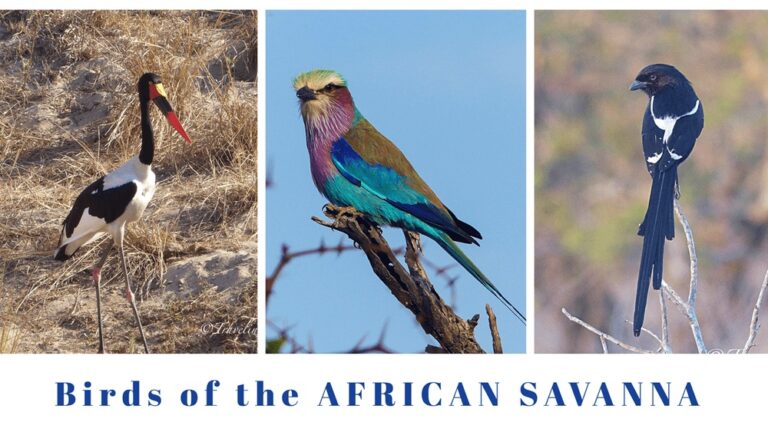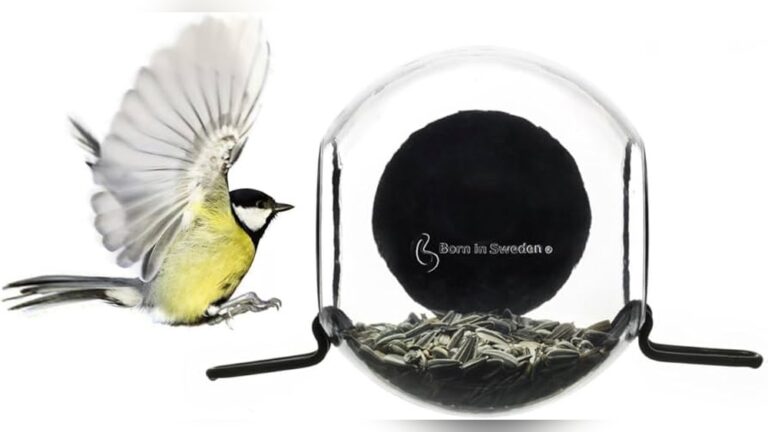How To Report A Rare Bird Sighting
Have you just spotted a rare bird and want to share this exciting find with others? Knowing how to report a rare bird sighting properly can make a big difference.
Your report could help scientists track bird populations, protect habitats, and even inspire fellow bird watchers. But how do you make sure your sighting counts? Keep reading, and you’ll learn simple, effective steps to report your rare bird sighting the right way—so your discovery gets the attention it deserves.

Credit: travisaudubon.org
Spotting A Rare Bird
Spotting a rare bird can be exciting. It takes patience and a sharp eye. Knowing what to observe helps you confirm the sighting. Careful observation makes your report valuable to bird watchers and experts.
Identifying Key Features
Look closely at the bird’s size and shape. Notice the color patterns on its feathers. Check for any unique marks on the wings or head. Pay attention to the beak shape and leg color. These details help identify the species correctly.
Using Binoculars And Cameras
Binoculars bring distant birds closer without disturbing them. Use a camera to take clear photos from a safe distance. Photos serve as proof and help experts verify the sighting. A steady hand and good lighting improve picture quality.
Noting Behavior And Habitat
Watch how the bird moves and feeds. Note if it is alone or with others. Record the type of trees or plants around the bird. The habitat gives clues about the bird’s preferences. Behavioral notes add depth to your sighting report.
Recording Your Observation
Recording your observation is a key step in reporting a rare bird sighting. Accurate records help experts verify your report. It also adds value to birdwatching communities and databases. Clear documentation shows respect for the bird and its environment.
Taking Clear Photos Or Videos
Photos or videos provide strong proof of your sighting. Use your phone or camera to capture the bird clearly. Focus on important features like color, size, and shape. Avoid blurry or dark images. Take multiple shots from different angles if possible.
Writing Detailed Notes
Write down what you saw right after the sighting. Describe the bird’s size, colors, and behaviors. Note any sounds or calls it made. Mention how long you observed the bird. Include details about the environment, like trees or water nearby.
Logging Date And Location
Record the exact date and time of your sighting. Use a GPS or map to mark the location precisely. Note landmarks or nearby roads for easy reference. Accurate date and place help scientists track bird movements. This information is vital for rare bird records.
Choosing Where To Report
Choosing where to report a rare bird sighting matters. It helps experts verify and study the bird. It also informs other birdwatchers in your area.
Pick the right place to share your sighting. Different options suit different needs. Some are local, some are online, and some are national.
Local Birdwatching Groups
Local birdwatching groups know your area well. They track bird movements and habits closely. Reporting to them helps keep local records accurate. These groups often share news with community members. You can also get advice on your sighting.
Online Bird Databases
Online bird databases collect sightings from many places. They provide a large pool of data for researchers. Upload photos and details to make your report strong. These sites often verify sightings with experts. Your report can help track rare birds worldwide.
National Wildlife Organizations
National wildlife organizations work on bird conservation. They use rare sighting reports to protect species. Reporting to them supports important research efforts. These groups may also publish your sighting. Your data helps guide conservation policies and actions.

Credit: travisaudubon.org
Submitting Your Report
Submitting your report about a rare bird sighting helps scientists and bird watchers track these special birds. Sharing clear and accurate information is key. Choose the best way to send your report quickly and easily.
Using Mobile Apps
Many birding apps allow you to submit sightings directly from your phone. These apps often have forms that ask for the bird species, location, and time seen. You can upload photos to prove your sighting. Apps send your report instantly to birding groups and experts.
Popular apps include eBird and iNaturalist. They are free and easy to use. Using an app saves time and helps you keep records of your sightings.
Filling Online Forms
Many bird organizations have websites with forms to report rare sightings. The forms ask for details like date, location, and bird description. Some require you to upload photos or audio recordings. Filling out these forms carefully helps experts verify your sighting.
Online forms are good if you want to add more details than apps allow. They also give a permanent record of your report on official sites.
Emailing Relevant Authorities
Emailing birding groups or wildlife departments is another way to report rare birds. Write a clear message with all information about the sighting. Attach photos or videos if you have them. Include your contact details for follow-up questions.
This method works well for detailed reports or when you have questions. Authorities appreciate reports that help protect rare birds and their habitats.
Following Up
Following up after spotting a rare bird is important. It helps confirm your sighting and shares your discovery with others. This step adds value to birdwatching communities and scientific records. Here are key actions to take after your rare bird sighting.
Verifying Your Sighting
Check your photos and notes carefully. Compare your sighting with bird guides or apps. Look for unique features that match the rare bird. Be honest about what you saw. Clear evidence makes your report stronger and more reliable.
Connecting With Experts
Contact local birdwatching groups or wildlife organizations. Share your photos and details with experienced birders. Experts can help confirm the sighting or offer advice. Their support adds credibility to your report and helps track the bird.
Sharing Your Experience
Post your sighting on birdwatching websites or forums. Write about what you observed and where you saw the bird. Sharing helps others learn and watch for the same species. Your story encourages more people to enjoy birdwatching.
Tips For Responsible Reporting
Reporting a rare bird sighting helps scientists and bird lovers track bird populations. It also protects these special creatures. Follow these tips for responsible reporting. This keeps birds safe and data useful. Your report can make a big difference.
Avoiding Disturbance
Stay calm and quiet near the bird. Do not get too close. Sudden moves can scare the bird away. Use binoculars or a camera with zoom. Let the bird behave naturally. Do not try to touch or feed it.
Respecting Private Property
Always ask permission before entering private land. Some places protect birds and their homes. Trespassing can harm habitats or upset owners. Follow local rules about birdwatching spots. Respect fences and signs you see on the way.
Keeping Data Accurate
Note the date, time, and exact location of the sighting. Describe the bird’s size, color, and behavior clearly. Take photos if possible for proof. Check your facts before sharing. Accurate reports help scientists study rare birds well.

Credit: www.registerguard.com
How Smart Pets Lover Can Help You with How To Report A Rare Bird Sighting
Turning Your Rare Bird Sighting Into a Learning Experience
Spotting a rare bird is not just a thrilling moment—it’s also a fantastic opportunity to deepen your connection with nature and contribute to citizen science. After carefully recording your observation and choosing where to report, consider how you can expand your understanding and share knowledge with others. For instance, reviewing your notes and photos can help sharpen your bird identification skills over time.
Following up on your report allows you to engage with ornithology communities, where discussions often lead to practical learning—like recognizing subtle plumage details or understanding migratory patterns. These interactions can enrich your birdwatching journey and inspire responsible reporting practices, which protect both the birds and their habitats.
- Join local birdwatching groups or online forums to exchange insights
- Explore resources from trusted organizations like the Audubon Society or eBird
- Keep a detailed journal to track your sightings and learn from each experience
At Smart Pets Lover, we believe every chirp tells a story worth exploring. If you’re eager to connect further or need guidance on bird care or identification, reaching out to your local wildlife center or bird conservation society can be invaluable. This not only supports your passion but also helps protect these wonderful creatures for future sightings.
Frequently Asked Questions
How Do I Identify A Rare Bird Species?
Identify a rare bird by noting unique features like color, size, and behavior. Use field guides or apps. Take photos for verification and compare them with trusted bird databases to confirm the species.
Where Should I Report A Rare Bird Sighting?
Report rare bird sightings to local birdwatching groups, wildlife organizations, or online platforms like eBird. These sources help track bird populations and support conservation efforts effectively.
What Details Should I Include In My Bird Report?
Include the bird’s location, date, time, behavior, and clear photos if possible. Mention weather conditions and habitat. Accurate details help experts verify and study the rare sighting.
Why Is Reporting Rare Bird Sightings Important?
Reporting helps scientists track bird populations and migration patterns. It supports conservation and raises awareness about endangered species. Your report contributes valuable data for research.
Conclusion
Reporting a rare bird sighting helps protect these special creatures. Share clear details and photos to support your report. Use trusted websites or local bird groups to send your information. Your report can help scientists learn more about bird habits.
Every sighting counts, no matter how small. Keep watching and enjoy the beauty of nature around you. Helping others know about rare birds makes a big difference. Stay curious and keep exploring the world of birds!






